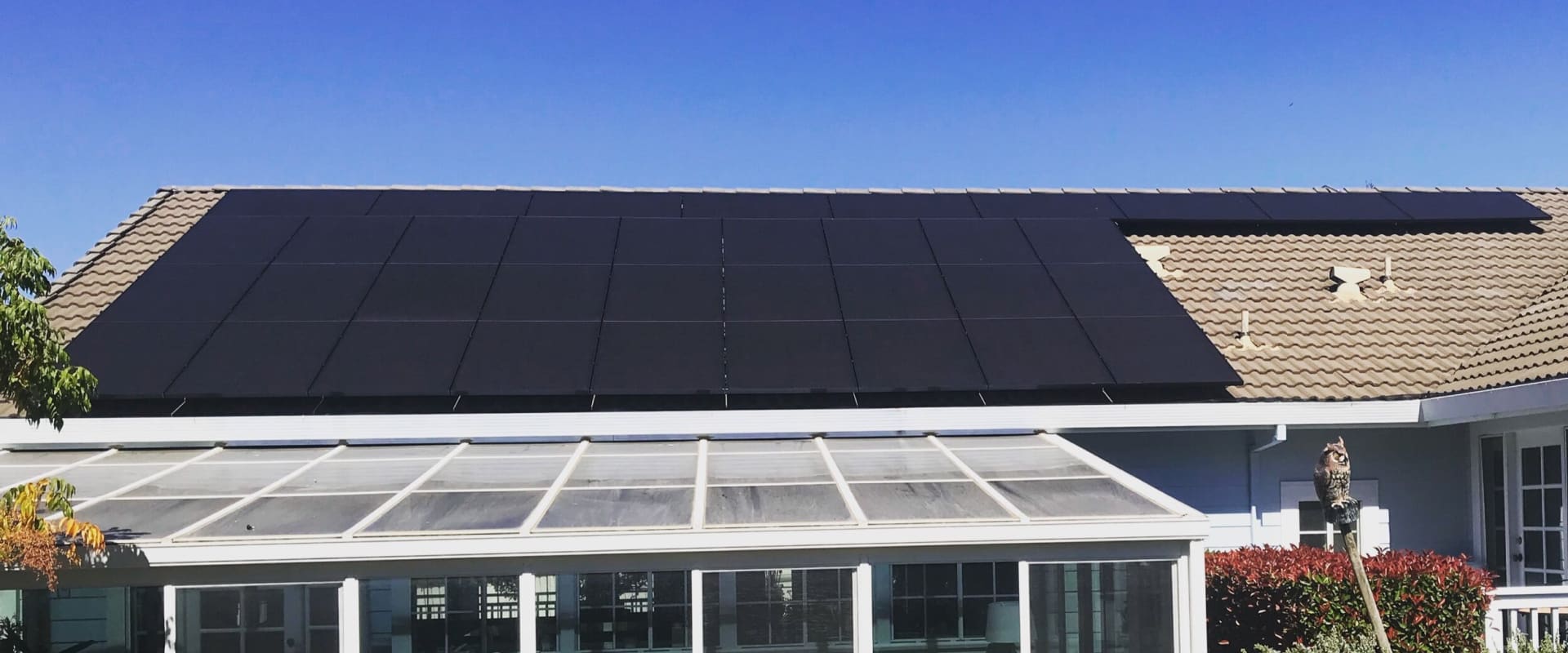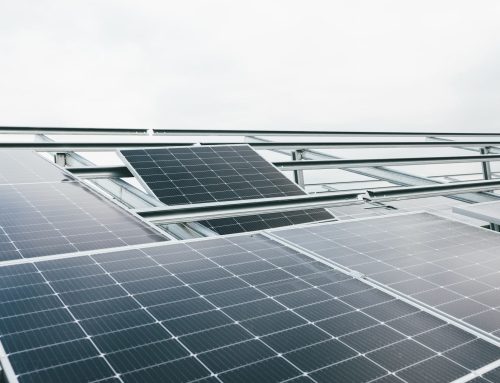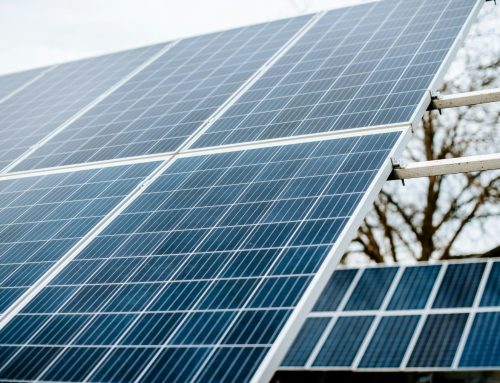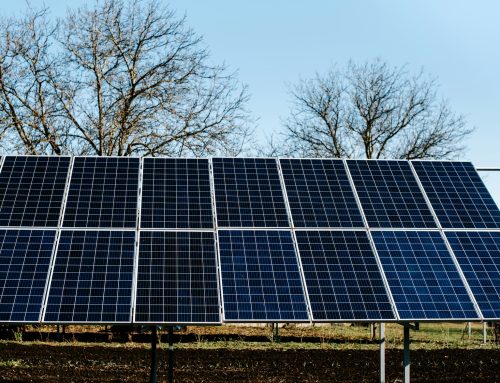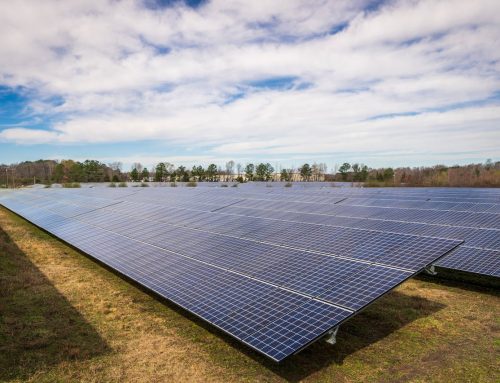With the rising costs of electricity and growing concerns for the environment, more and more South Australians are turning to renewable energy.
Although a cheaper power bill is an exciting advantage, there are some questions to answer before you start enjoying the benefits of sustainable renewable power.
Like, should solar panels be mounted on your roof or walls?
The short answer to this question is – both locations work.
However, if you want to maximise your energy production (and savings), there are some important nuances to take into account.
In this article, we will delve into the pros and cons of mounting solar panels on the wall of your Adelaide home or business, shedding light on the benefits and potential drawbacks of this alternative approach.
Whether you’re a homeowner looking to save on energy costs or a business owner considering a sustainable energy solution, we’ve got you covered.
Read on to learn everything you need to know.
What are Wall-Mounted Solar Panels?
Also known as solar wall systems, they are a dynamic approach to harnessing the abundant sunlight our city receives.
Traditionally, when you think of solar panels, the image of them perched high on your roof likely comes to mind. However, wall-mounted panels flip the script.
These systems involve installing solar panels directly on the exterior walls of your home or business.
Unlike their roof-mounted counterparts, which rely on the angle and direction of your roof, wall-mounted panels are adjustable, allowing for optimal sun exposure throughout the day.
These panels are designed to capture sunlight and convert it into electricity, which can be used to power your home or business, reduce energy bills, and decrease your carbon footprint.
The unique flexibility of wall-mounted panels makes them an attractive option for those facing shading issues on their roofs or limited roof space.
| Aspect | Pros | Cons |
|---|---|---|
| Optimal Sun Exposure | Adjustable to follow the sun’s path throughout the day, resulting in maximum sunlight exposure and higher energy production. | May be less efficient than roof-mounted systems in areas with overhead sunlight, leading to lower energy production. |
| No Roof Space Limitations | Don’t rely on roof space, making them suitable for properties with limited or shaded roof areas. | Require ample unshaded wall surface, which can be challenging for properties with limited exterior wall space. |
| Aesthetically Pleasing | Seamlessly blend with architectural design, offering a sleek and modern appearance that enhances property aesthetics. | Appearance may not blend well with some property designs, potentially detracting from overall aesthetics. |
| Reduced Installation Costs | Potentially more cost-effective than roof-mounted systems, especially for buildings requiring additional structural support. | Installation complexity may lead to higher costs in some cases, depending on property structure and electrical connections. |
| Ease of Maintenance | Easier to access and maintain than roof-mounted systems, allowing for convenient cleaning, inspections, and repairs. | More exposed to wind and weather elements, which can increase wear and tear over time and potentially affect lifespan. |
| Energy Diversification | Can complement existing roof-mounted systems or act as standalone systems, providing more consistent energy supply. | Shading challenges can significantly impact performance, leading to notable drops in energy production. |
Pros of Wall-Mounted Solar Panels
Optimal Sun Exposure
They can be adjusted to follow the sun’s path throughout the day.
This flexibility ensures that the panels receive maximum sunlight exposure, resulting in more energy production.
On average, wall-mounted panels can generate 10-15% more electricity compared to their roof-mounted counterparts in Adelaide’s changing sun angles.
No Roof Space Limitations
One of the significant advantages is that they don’t rely on roof space. This is particularly beneficial for homeowners with limited or shaded roof areas.
You can take full advantage of your available wall space to generate clean energy.
Aesthetically Pleasing
They can seamlessly blend with your home or business’s architectural design. They offer a sleek and modern appearance that can enhance the overall look of your property.
This aesthetic appeal can be particularly appealing for businesses looking to showcase their commitment to sustainability.
Reduced Installation Costs
In some cases, the installation can be more cost-effective than roof-mounted systems.
This is especially true for buildings that require additional structural support to accommodate roof-mounted panels.
The simplicity of wall-mounted installations can save you on upfront expenses.
Ease of Maintenance
They are easier to access and maintain than roof-mounted ones.
Cleaning, inspections, and repairs can be carried out with greater convenience and safety, potentially extending the lifespan of your solar system.
Energy Diversification
Installation can complement an existing roof-mounted system or act as a standalone system.
This allows you to diversify your energy sources, ensuring a more consistent energy supply even during cloudy days or when your roof panels are shaded.
These pros paint a compelling picture of the benefits of opting for wall-mounted panels in Adelaide.
From increased energy production to improved aesthetics, this innovative approach to renewable energy offers a range of advantages that can make your transition to clean and sustainable power all the more appealing.
Potential Cons of Wall-Mounted Solar Panels
Limited Efficiency in Certain Locations
They may not be as efficient as roof-mounted systems in areas where sunlight is predominantly overhead throughout the day.
In such locations, roof panels might capture more sunlight, resulting in higher energy production.
Space Requirements
While wall-mounted panels don’t rely on roof space, they do require an ample, unshaded wall surface.
This can be a challenge for properties with limited exterior wall space due to architectural design or shading from nearby buildings or trees.
Aesthetic Compatibility
While we mentioned the aesthetic appeal of wall-mounted panels as a pro, it can also be a con if they don’t blend well with your property’s design.
Some homeowners may find the appearance of panels on their walls less appealing than traditional roof installations.
Installation Complexity
Depending on your property’s structure and the location of electrical connections, wall-mounted panels can involve a more complex installation process.
This complexity can lead to higher installation costs in some cases.
Potential Wind and Weather Exposure
Wall-mounted panels are more exposed to wind and weather elements compared to roof-mounted ones. This exposure can lead to increased wear and tear over time, potentially affecting the lifespan of the panels.
Shading Challenges
Shading can significantly impact the performance of wall-mounted panels. Even a small amount of shading on the panels can result in a notable drop in energy production.
Wall-Mounted Panels vs. the Alternatives
As you consider your options for harnessing renewable energy in Adelaide, it’s natural to wonder how wall-mounted panels stack up against other solutions available in the market.
Let’s compare wall-mounted panels with their counterparts to highlight the specific characteristics that set them apart.
| Aspect | Wall-Mounted Panels | Roof-Mounted Panels | Ground-Mounted Solar Arrays | Solar Tiles | CIGS Thin-Film Panels |
|---|---|---|---|---|---|
| Efficiency | Adjustable for optimal sun exposure, potentially outperforming roof-mounted systems in certain situations. | Relies on roof orientation and angle, may not be as adjustable as wall-mounted panels. | Requires open land, generally less adjustable than wall-mounted or roof-mounted panels. | Varies depending on integration into roofing material, typically lower efficiency than traditional panels. | Typically offer lower efficiency compared to traditional panels. |
| Aesthetics | Seamlessly integrates with property design, offering a sleek and modern look compared to traditional roof installations. | May alter the visual appearance of the property, depending on the design and integration. | Can maintain property aesthetics if installed in less visible areas, may alter landscape in prominent locations. | Can enhance property aesthetics, though integration may affect overall appearance. | May offer flexibility in installation and integration, but typically less visually appealing than traditional panels. |
| Space Flexibility | Does not rely on roof space, making them suitable for properties with limited or shaded roofs. | Requires available roof space and orientation for optimal performance. | Requires open land, may not be suitable for properties with limited exterior space. | Typically integrated into roofing material, may require specific roofing types or modifications. | Installation and integration may require specific considerations due to lower efficiency. |
| Installation Complexity | Generally easier to install, requires integration into existing wall structure. | Installation complexity varies depending on roof structure, may require professional installation. | Installation may require additional groundwork and supports, professional installation recommended. | Integration into roofing material, may require specific roofing types or modifications. | May offer flexibility in installation, but typically less efficient than traditional panels. |
| Cost-Effectiveness | Tends to be more cost-effective, utilizing existing wall space and potentially reducing upfront expenses. | Initial costs vary depending on roof structure and integration, may require additional equipment or modifications. | Initial costs may be higher due to additional groundwork, long-term savings may vary based on energy production. | Installation costs may vary, initial investment may be higher due to integration into roofing material. | Initial costs may be lower, long-term savings depend on efficiency and energy production. |
| Energy Storage Integration | Can be integrated with solar battery systems for efficient energy storage, ensuring continuous power supply. | Can be integrated with solar battery systems for backup power during grid outages. | Not applicable for energy storage, relies on grid connection for power supply. | Not applicable for energy storage, primarily designed for electricity generation. | Not applicable for energy storage, primarily designed for electricity generation |
Roof-Mounted Panels
- Efficiency: Wall-mounted panels offer adjustability to maximise sun exposure throughout the day, potentially outperforming roof-mounted systems in certain situations.
- Aesthetics: Wall-mounted panels can seamlessly integrate with your property’s design, offering a sleek and modern look compared to traditional roof installations.
- Space Flexibility: Wall-mounted panels don’t rely on roof space, making them a viable option for properties with limited or shaded roofs.
Ground-Mounted Solar Arrays
- Space Utilisation: Ground-mounted arrays require open land, while wall-mounted panels use your existing property without consuming extra space.
- Aesthetics: Wall-mounted panels can maintain the visual appeal of your property, while ground arrays might alter your landscape.
Solar Tiles
- Installation Complexity: Wall-mounted panels are generally easier to install, and require integration into your roofing material.
- Cost-Effectiveness: Wall-mounted panels tend to be more cost-effective, making them a more accessible option for many homeowners.
Solar Battery Systems
- Energy Storage: Wall-mounted panels can be integrated with solar battery systems for efficient energy storage, ensuring a continuous power supply even during grid outages.
- Cost Efficiency: While solar battery systems can provide backup power, wall-mounted panels offer a broader scope of energy production, potentially making them a more cost-efficient choice.
Top Solar Battery Options Compared
Solar Thermal Systems
Function: They are primarily used for water heating, while wall-mounted panels generate electricity. The choice depends on your energy needs and goals.
CIGS Thin-Film Panels
Efficiency: Wall-mounted panels typically offer higher efficiency compared to thin-film panels, ensuring better energy production for your investment.
Wall-mounted solar panels offer unique advantages, particularly in terms of flexibility, aesthetics, and cost-effectiveness.
However, the best choice for your property ultimately depends on your specific requirements, budget, and the availability of space and sunlight.
Making Your Decision on Wall-Mounted Panels
Let’s summarise the key points and offer recommendations based on different customer needs and priorities.
Pros of Wall-Mounted Solar Panels:
- Optimal sun exposure and increased energy production.
- No reliance on roof space, ideal for shaded or limited-roof properties.
- Aesthetic appeal with a modern and sleek design.
- Potential cost savings on installation.
- Ease of maintenance and accessibility.
- Energy diversification for consistent power supply.
Comparison with Other Solutions:
- Superior aesthetics compared to roof-mounted panels.
- More space-efficient than ground-mounted arrays.
- Easier installation and cost-effective compared to solar tiles.
- Versatile integration with solar battery systems.
- Electricity generation versus water heating in solar thermal systems.
- Higher efficiency compared to thin-film panels.
The unique advantages of wall-mounted panels, including flexibility, aesthetics, and cost-effectiveness, make them a strong contender in the renewable energy market.
However, the best choice ultimately depends on your specific needs and priorities.
Ready to Take the Leap? Contact Energy Buster Today!
Are you ready to harness the abundant sunshine in Adelaide and make a sustainable choice for your energy needs?
Whether you’re thinking of wall-mounted solar panels or exploring other solutions, we’re here to guide you every step of the way.
At Energy Buster, we’re committed to helping you make an informed decision that aligns with your unique requirements and priorities.
Our team of experts is ready to provide you with personalised advice, conduct on-site assessments, and offer a tailored quote to suit your budget.
Reach out to the Energy Buster team now and claim a 100% obligation-free quote for your next project.

